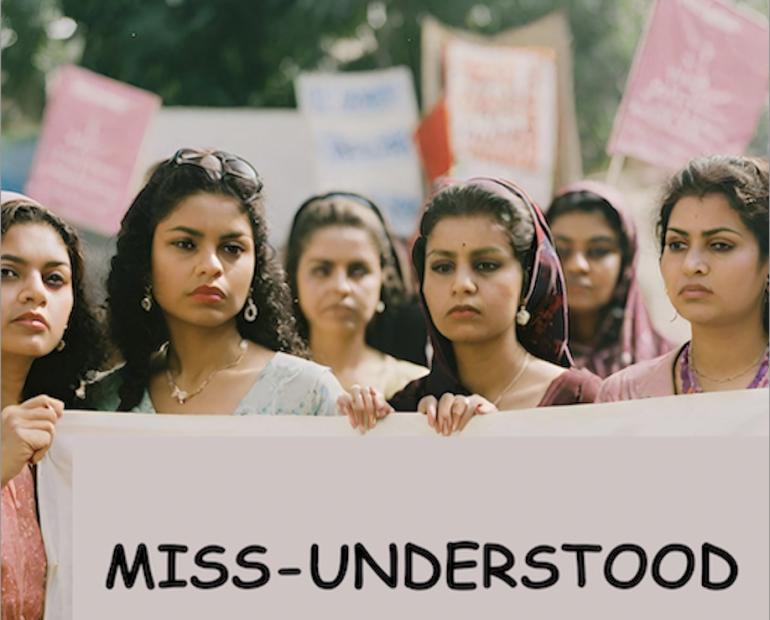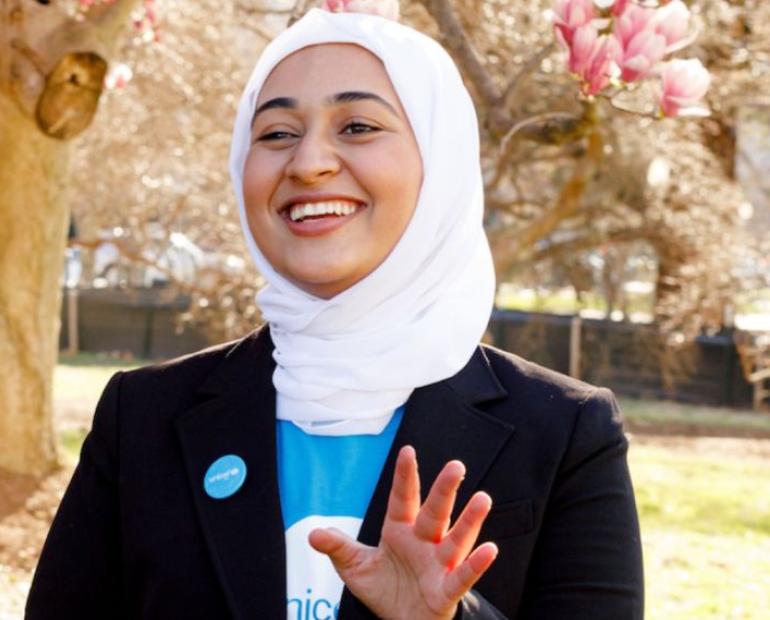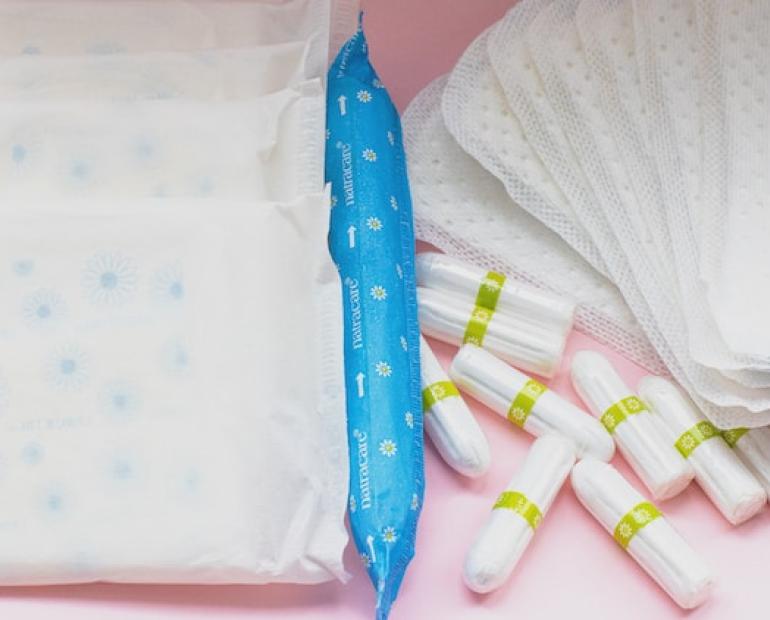When the right data are in the right hands at the right time, decisions can be better informed, more equitable, more likely to protect to protect children’s and adolescents’ rights.
This month, as part of our Hi-5 For Health series for a healthier lifestyle, we will talk about data and how you can use it in your adolescent health advocacy. You can also download these materials in pdf to review them offline and share it with your friends:
REAL LIFE, REAL TALK
Young people around the world are rallying towards a new era of advocacy: one that is backed by data and fueled by their real-life experiences. Data play an important role in supporting youth voices and helping them spread messages about the issues that are most important to them.
This includes advocating for policies and services that are accessible and culturally relevant. When we are front and center of this fight to improve our health and well-being, we can achieve our best lives. Below are three examples of how young people are using data to advocate for health policies, plans and programs in their own lives.

"Hi, I’m Malvikha! When I first tried to start a psychology club in my high school, I did not have many facts and statistics to support my asks. I knew that young people in my school needed more support for their mental well-being.
Conversations about mental conditions were largely taboo topics. My advocacy was not rooted in evidence; I was on a journey to identify data on adolescents’ health and well-being, but these facts were simply not available.
Fortunately, things look different these days. We now know more about the state of adolescent health across the world, in part due to resources like the UNICEF country dashboard on adolescent health including non-communicable diseases (NCDs), disability and mortality. Such resources are powerful tools for youth, policymakers and advocates that are interested in developing evidence-based responses to health needs."
"Hi everyone, Winnie here! I’m passionate about gender equity and the role this plays in addressing young people’s sexual and reproductive health and well-being especially among rural communities and those who may not have access to digital platforms.
I work at the intersection of education, gender equality, and sexual reproductive health. Having reliable data to highlight the need for better investments in improving the health and educational opportunities of adolescents is vital in these contexts, especially when there are competing priorities."

"What’s up? My name is David and I’m tuning in from Saint Lucia. I use sports as a tool to tackle important issues faced by youth and children in Saint Lucia.
- Did you know that in Saint Lucia, 22% of the population in 2016-18 suffered from moderate to severe food insecurity?
- Trends in nutritional risk factors have been climbing since the 1990s, with the prevalence of overweight at 24% in girls and 21% in boys aged 10-19.
- This is matched by a high prevalence of behavioral risk factors like insufficient physical activity – 86% in girls and 83% in boys – that negatively shapes adolescent health and well-being in the community.
Sports can be a powerful and creative tool to introduce important topics to youth in an accessible manner that connects with and empowers them. With the growing burden of NCDs around the world, data holds more potential now than ever before to shape health policies, plans, and programs for adolescent health.”
KNOW THE FACTS
Meet Malvikha, a 23-year-old youth advocate from the United Arab Emirates who will guide you through this learning process. You can use UNICEF's Adolescent Health Data Dashboard to learn more as you explore the different topics covered by her.
Let's begin!
In 2019, adolescents represented around 1 in every 6 persons worldwide.

There are 1.2 billion adolescents in the world today; that is over 16% of the world’s population. Understanding the different contextual factors that affect adolescents is important so that we can advocate for positive social change.
Regional, country, and population level contextual data can give us important clues about the state of adolescent health and well-being. For example, 18% of our world population lives below the national poverty line, and 19% live with moderate to severe food insecurity. Using such information, we can understand the needs of adolescents in our communities, and what we can do to create healthier lives.
It is important to understand different policies and plans in your country that are related to adolescents.

Advocacy is closely connected to policymaking. Policies guide decisions and plans that shape our countries and our futures as young people. Engaging with the policy making process (and policy makers) gives us a better chance at achieving our own goals and in creating a healthier world for all.
For example, it is important to know about national adolescent health programs in our countries as well as if there are restrictions to access key services such as contraception, HIV testing and counselling and mental health services. Restrictions can be in the form of a legal age limit for unmarried adolescents without parental/legal consent and user fees. Taxation on harmful substances like alcohol, tobacco or even sugar-sweetened beverages is important for adolescents’ health and well-being as it helps control access and availability.
Understanding death and disability can be helpful to us as we try to identify focus areas for advocacy.

When we are facing a health concern, it can lead to many possible outcomes 1) death, 2) no death and the person affected by the problem continues to live with some disease or disability, or in the best case scenario, 3) recovery.
Population level estimates on death and disability tell us what diseases, illnesses, or injuries cause most of the burden in our communities. You can use the UNICEF Adolescent Health Data Dashboards to stay up to date on the latest issues facing people of your age in your country.
Information about disease or disability is provided through two key measures: 1) Disability-Adjusted Life Years (DALYs) which measures the health status of a group or a country, and specifically, the number of years lost due to disease or ill-health or premature death. 2) Years of Health Life Lost due to Disability (YLDs). For instance, one YLD represents one full year of healthy life lost due to disability or ill-health.
Using the death and disability data among boys and girls across different age groups, we can find the top causes within our own countries and across different countries in our regions or the world so that we can advocate for the issues most affecting our communities!
Understanding adolescent risk factors can help us focus our efforts and advocate for healthier lifestyles.

Risk factors provide us with helpful information about which factors can lead to an increased likelihood, or risk, of developing a disease or infection. The greater the degree of the risk factor, the higher the likelihood that we will develop a disease.
For instance, all forms of tobacco are harmful, and there is no safe level of exposure to tobacco. If an individual smokes, there is an increased likelihood of developing serious diseases that affect the heart and lungs, or even develop cancer. Even smokeless tobacco, which is highly addictive and damaging to health, increases risk of cancer and other diseases. (See the Substance Use Prevention Module for more on this!)
Data can be used in creative ways to share our messages.

There are so many ways for young people to get involved in shaping positive social change. U-Report is one such platform! There are also many ways for us to collect and present data in creative ways to share with various audiences.
We can use numbers from reports, create charts or posters, and can also use photos or videos to contextualize data-- we can share on social media, talk to our friends/families/neighbors, give a talk, present at a conference, or a policy summit.
As you engage with data, think about who you want to share the information with.
Make a difference

Now it’s your turn. Download the template here and use the UNICEF Adolescent Health Country Profiles to look at your country’s data and develop a call to action or try one of the challenges below!
Picture This!
Use your data analysis skills -you can use this template- to present data and charts that are related to issues that are important to you and your community. Share these on social media and tag @voicesofyouth.
Express yourself!
Share your thoughts about adolescent health by submitting a piece to Voices of Youth.
Pass it on!
Share something you’ve learned here with one other person and spark a conversation! These conversations can be digital through platforms such as Streamyard, Zoom, Facebook Live, or Youtube or in person, while keeping everyone safe.
The content is this learning module was developed by UNICEF in collaboration with the UNICEF-AstraZeneca Young Health Programme Young Leaders. Learn more about their vision for a healthier future here. Art by Vania Dhianisya and Njung'e Wanjiru. Videos by Saish Gaonkar.
UNICEF does not endorse any company, product or service.





